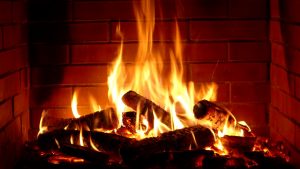Now that we are into December, it’s time to start thinking about preparing your home for winter and the freezing weather that comes with the change of season. If you followed our fall-maintenance checklist, you may have already gotten a head start on some of these items, but today we present you with our top-14 things you need to do to prepare your home for winter.
Remember, following this list can help save you time and money in the long run, so don’t waste any time and get out and start preparing for colder weather!
- Get your roof inspected for any deficiencies. This doesn’t necessarily mean shelling out many thousands for an entire roof, but perhaps there are weak spots where water can ingress and only a quick and affordable repair is needed.
- Check all the venting to make sure it’s working properly. If someone is already checking your roof, get them to check on the attic venting while they’re at it. Bathroom vents can build up moisture and lead to rot. Same for your dryer vent and kitchen hood fan. Make sure the flashing around said vents are in good shape and secured properly.
 Check and/or unclog your gutters. Gutters that cannot drain will have resting water which can result in water ingress/backing up into your home and damage to the gutters and downspouts themselves when ice builds up. Watch for any water-staining on upper ceilings.
Check and/or unclog your gutters. Gutters that cannot drain will have resting water which can result in water ingress/backing up into your home and damage to the gutters and downspouts themselves when ice builds up. Watch for any water-staining on upper ceilings.- Drain outside water hoses and faucets and store away hoses before the first freeze sets in. You will have to shut off the water supply to drain those particular lines, unless you have freeze-resistant hose bibbs. This prevents any bursting of pipes and flooding due to freezing and expansion.
- Learn how to shut off all utilities. It is always a good idea to know how to turn off the gas, electricity and water in your home. Always wait for service personnel to turn them back on, especially the gas supply.
- Secure all outdoor objects or move them inside. Grills, patio furniture and flowerpots are common household items that can become airborne in high winds. Do not use gas grills inside or store propane tanks inside the house or garage – especially if attached to the home.
- Inspect all caulking and weather stripping. Inspect your windows and doors to make sure sealant hasn’t failed and is in need of re-doing. Naturally, a good, tight seal around windows/doors prevents energy loss and any moisture from getting in.
 Get your fireplace cleaned to ensure everything is working properly (gas or wood-burning). A flue that can’t close properly means warm air is escaping when you’re not using it. A properly cleaned fireplace means less of a fire hazard as well. Remember: gas fireplaces need servicing too!
Get your fireplace cleaned to ensure everything is working properly (gas or wood-burning). A flue that can’t close properly means warm air is escaping when you’re not using it. A properly cleaned fireplace means less of a fire hazard as well. Remember: gas fireplaces need servicing too!- If you have a furnace or boiler in your home, get it serviced as well.Clean out the air ducts, replace the filter and check the drive-belt (if applicable). A tip-top shape furnace/boiler is clean, can save you money and extend the life of the appliance. Plus carbon monoxide is always bad news – Get a CO detector as well, if you don’t have one less than five years old.
- If you have ceiling fans, check to see if they can operate in reverse. This has the advantage of circulating warm air throughout the home and can actually help lower your heating bill.
- Get a programmable thermostat – upgrade from anything less.
- Make a point of keeping an eye on your water heater. Seven to 10 years of service life is average.
- Double-check the supply hoses to your clothes washer for any sign of leaks/bulging, if not “burst-proof”.
- Always be alert to potential fire-hazards!
If you have any questions about what you need to do to prepare your home for the winter months please contact Glenn at Duxbury & Associates. We can provide helpful advice or even book a safety inspection if necessary to help put your mind at ease.


















